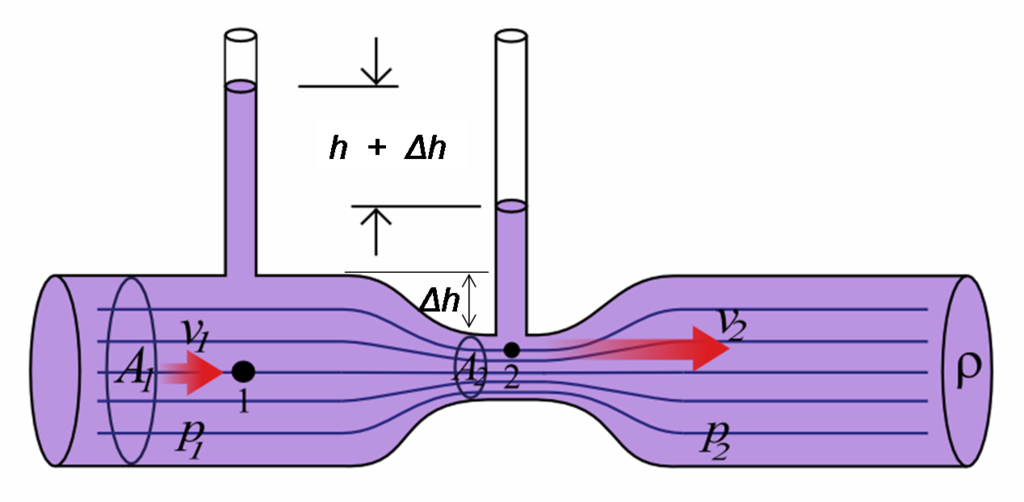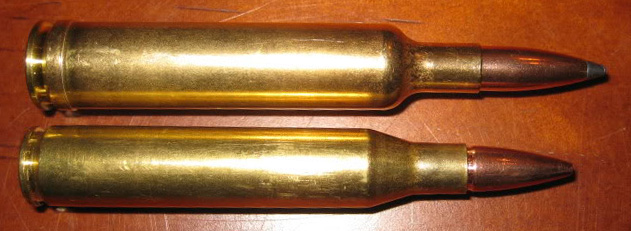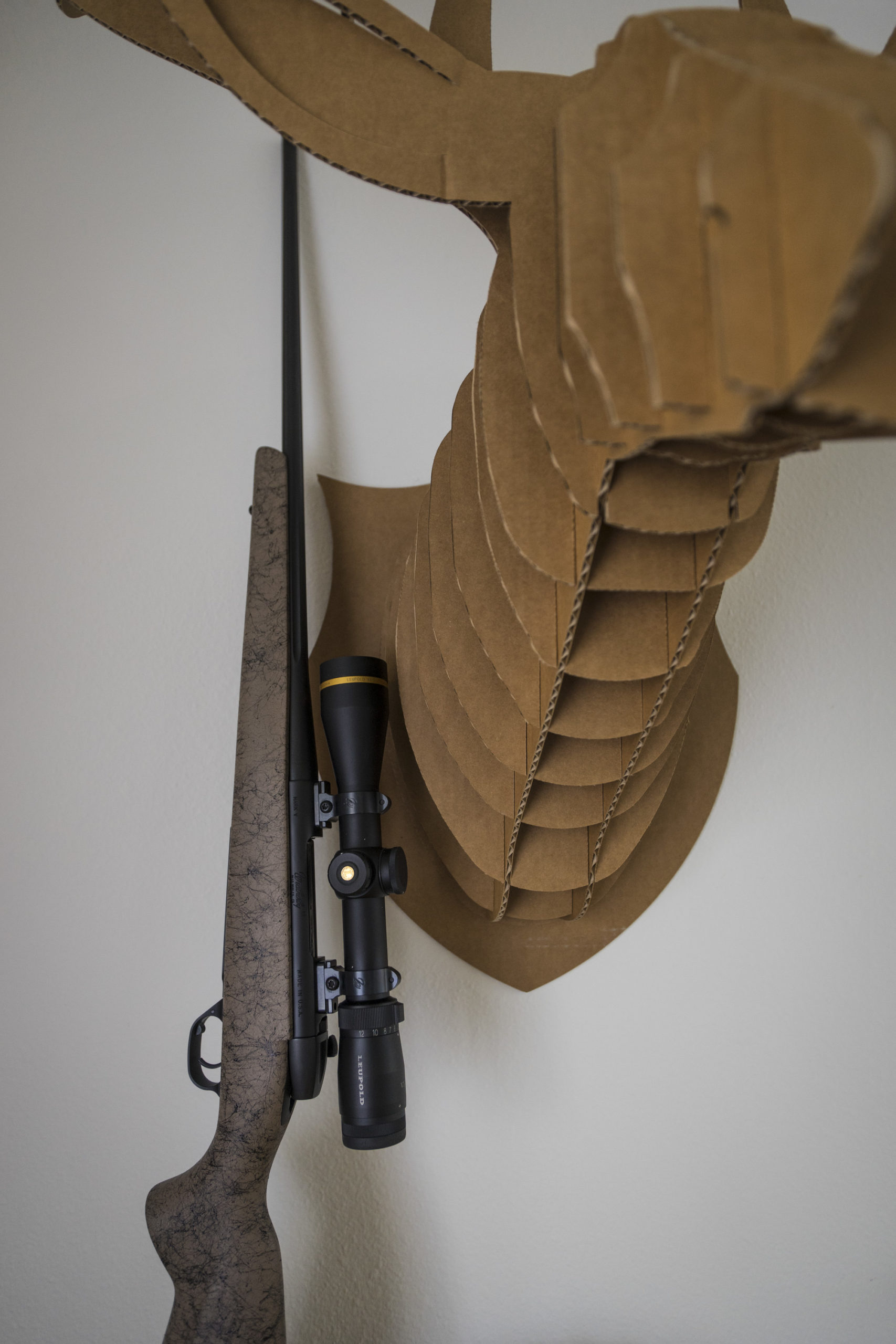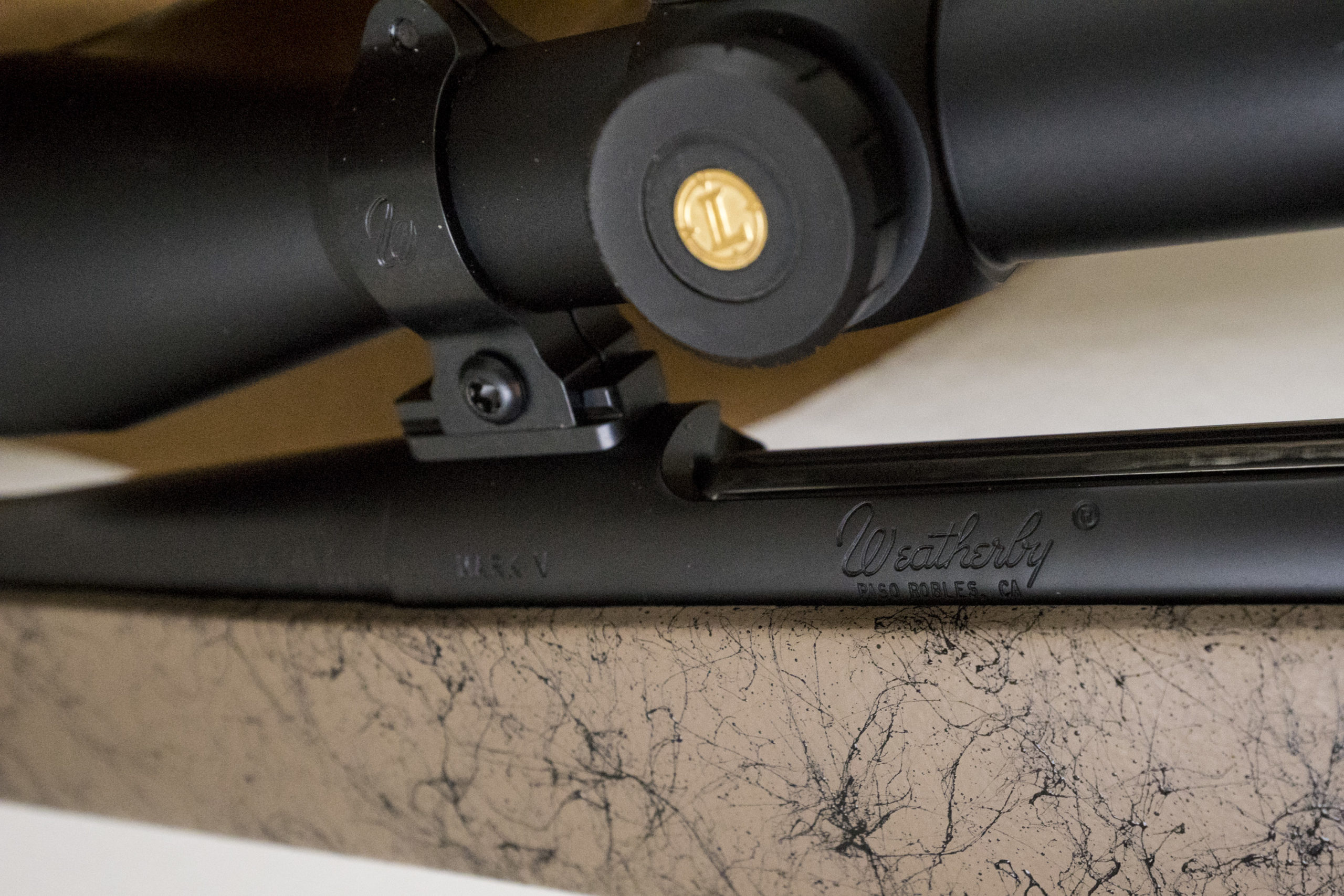The long range rifle has been around since the 19th century, a short 100 years after Daniel Bernoulli published his book, Hydrodynamica, on the relationship between pressure and potential energy (or speed) of a fluid. The gist of his principle relates an increase in speed of a fluid to a decrease in pressure. Using this with the venturi effect that states the velocity of a fluid increases as the cross sectional area decreases provides the key to projectile ballistics.
As the below image shows, when you have a fluid in the left chamber at dot 1 with cross sectional area (A1), velocity (v1), and pressure (p1), as that fluid flows to point number 2, the cross sectional area (A2) decreases along with the pressure (p2) while the velocity (v2) increases. The decrease in pressure is represented in h +Δh. If only this were the case with the flow of traffic…

The venturi effect (image credit: Wikipedia)
So how does this relate to ballistics and projectiles?
A bullet cartridge rely’s on the venturi effect to increase the speed of a bullet as it is fired. The overlay image below shows a pretty good example how a bullet cartridge looks just like a properly designed venturi:

The Weatherby .257 Magnum cartridge is one of the best examples of the Venturi effect in full force. This round, which was introduced in 1944, was touted as Roy Weatherby’s personal favourite for good reason; it shoots flatter and faster than any other quarter inch round. This equates to more kinetic energy in to the target for ultimately a much quicker and cleaner harvest. The .257 WBY Mag utilizes the case from a .375 Holland and Holland. It is necked down (meaning the end where the bullet goes is made smaller) to fit the .257 inch diameter bullet, and the unique Weatherby double radius venturi throat is added in place of the simple angled neck.

.308 Winchester on the left, .257 Weatherby Mag in center (notice the double radius venturi neck), the parent .375 H&H Magnum case on the right. (Image credit: Wikipedia)

The 375 H&H shell necked down to the .257 WBY Mag
The double radius venturi neck is a Weatherby exclusive and one of the very reason’s the .257 WBY Mag is such a fast round. As opposed to an angle neck in the cartridge, the double radius allows the gases of the burnt powder to exit smoother and more directly at the base of the bullet, pushing it out quicker. It also provides lower pressure in the cartridge (thanks Bernoulli!), which helps to prevent cartridge failures or ruptures. The double radius venturi neck also provides more volume in the main chamber of the cartridge for both more powder and it allows the gas to expand before exiting, this again helps to achieve insane muzzle velocities. The typical .257 WBY Mag round has about 80-85 grains of gun powder inside the cartridge, which is about 25% more than the .25-06 Winchester.

Comparing a .257 Weatherby Mag 100 grain bullet (top) to an equivalent .25-06 Remington 100 grain bullet (bottom), the Weatherby is exiting with a muzzle velocity of over 3600 feet per second, while the Winchester is just above 3200. An extra 400 feet per second, or 13%, really helps to keep the bullet flying super flat. When sighted in for 300 yards, the .257 will shoot about 2.7 inches high at 100 yards, and drop less than 8 inches when stretching out to 400 yards. As a hunter, this means that you have to make very few small adjustments in your aiming when taking a shot.

The amount of energy that a bullet carries is measured in foot – pounds. This is calculated using the velocity of a bullet, and it’s weight, measured in grains. What is really extraordinary about the .257 WBY Mag is when you start comparing it to the higher calibre rounds like the ever popular .30-06. At 200 yards, a 110 grain .257 WBY Mag bullet is hauling right around 2,000 ft-lbs of energy, this is on par with a 180 grain .30-06 bullet usually reserved for hunting large game like elk. The real benefit here though, is that a .257 WBY Mag shoots magnitudes flatter than a .30-06.

We’ve got our hands on a new Weatherby Mark V Ultra Lightweight chambered in a .257 Weatherby Magnum. We will be doing some long term testing with this rifle and hunting with later this year, keep an eye out for more helpful articles!

IndefinitelyWild is a new publication about adventure travel in the outdoors, the vehicles and gear that get us there and the people we meet along the way. Follow us on Facebook, Twitter, and Instagram.
